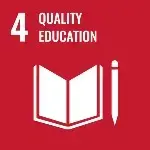SDG 3 – Good health and well-being
A shifting global landscape puts important gains in women’s health at significant risk
For 25 years, the world has made significant strides on women’s right to health, especially sexual and reproductive health. From 2000–2023, maternal mortality declined by 40 per cent (from 328 to 197 deaths per 100,000 live births). Adolescent fertility declined from 66.3 to 38.3 births per 1,000 women aged 15–19 between 2000–2024; skilled birth attendance increased from 60.9 to 86.6 per cent and the share of women of reproductive age (15–49) using modern family planning methods rose from 73.7 to 77.1 per cent from 2000–2024. Yet in the least developed countries, trends in adolescent births diverge, with the number climbing from 4.7 million in 2000 to 5.6 million in 2024.
Pregnancy at a young age has direct, lifelong consequences. It may reflect a lack of sexual and reproductive care that poses the risk of missing a range of critical services, such as the HPV vaccine to prevent cervical cancer. Increased longevity for women in general means that their reproductive years constitute a smaller proportion of the total, underscoring the urgency of quality care across their lives. Women spend more years in poor health (10.9 compared to 8.0 for men in 2021), suffering from chronic conditions including back and neck pain, gynaecological diseases, migraines and depressive disorders.
3 + years
women spend nearly 3 more years in poor health than men.
Cuts to global aid and growing backlash against gender equality put hard-won health gains at risk. In early 2025, over 60 per cent of women-led HIV organizations lost funding and/or were forced to suspend services, although countries in sub-Saharan Africa, such as Botswana, Ghana, Kenya, Malawi, Nigeria and South Africa, have pledged domestic support for these services. Strong action is needed to close leadership gaps in the health sector. Women comprise 67 per cent of the global health workforce but face a 24 per cent gender pay gap. Their systematic exclusion from leadership roles perpetuates the de-prioritization of their health needs.
Maternal mortality ratio by region, 2000–2023 (deaths per 100,000 live births)





